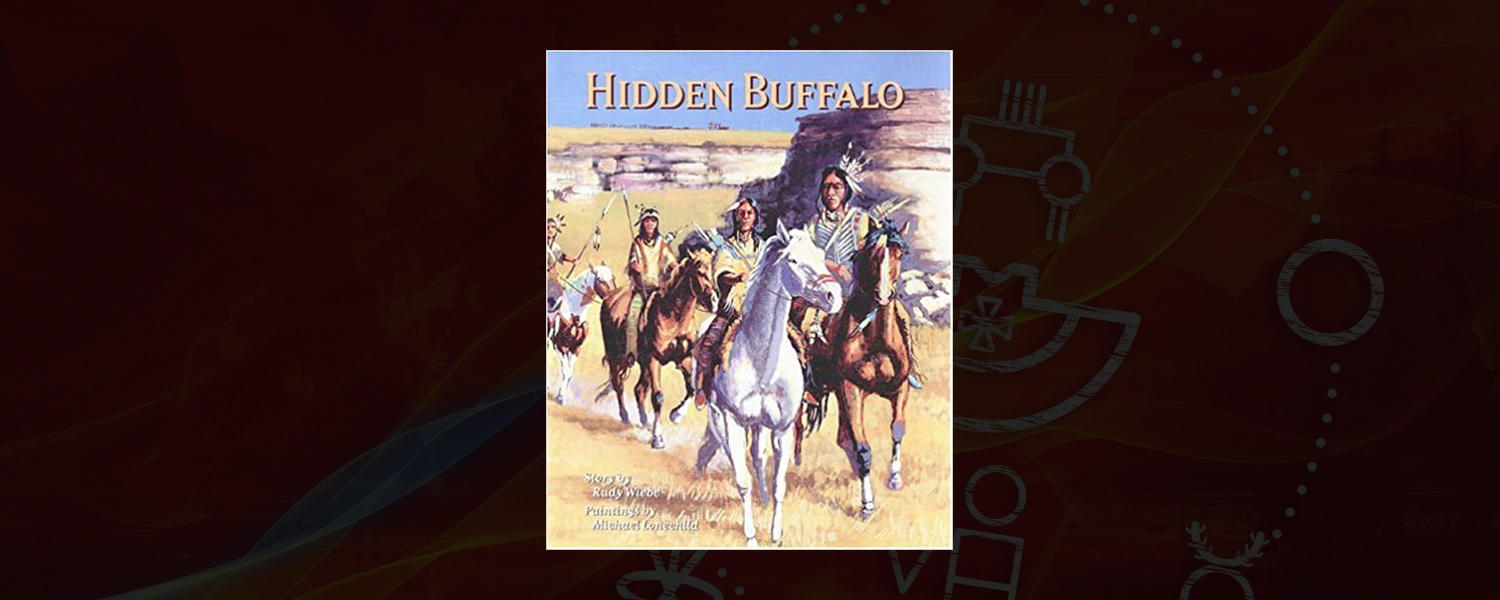
Hidden Buffalo
by Rudy Wiebe & Michael Lonechild
Description:
Publisher's description (Red Deer Press, 2003):
In this lyrical coming-of-age story, Governor General's Award-winner Rudy Wiebe captures the anxiety of a boy who feels powerless to help his people, but who must speak his dreams if they are to survive. Steeped in Aboriginal myth and lore, Hidden Buffalo is also the tale of how a whole tribe can turn its gaze from the horizon to see to the wisdom of a child.
Original paintings by noted Cree artist Michael Lonechild capture the colorful palette of the prairie landscape in autumn and the rich detail of Cree life in the late nineteenth century. Michael Lonechild is Cree. Rudy Wiebe is non-Indigenous.
Creator Biographies (Strong Nations):
Rudy Wiebe is the award-winning author of twelve books, including Of This Earth: A Mennonite Boyhood in the Boreal Forest and The Temptations of Big Bear. As a prairie writer, he has often concerned himself with Native stories, feeling place of birth to be more important than blood ancestry. Wiebe lives in Edmonton.
Michael Lonechild is a Cree, Native-Canadian painter best known for his brightly colored depictions of historical and present-day Cree culture.
Resource format: Picturebook
Age recommendation: Pre-K to Grade 4
Keywords: community, Cree, boyhood, childhood, coming-of-age, responsibility, guidance, kinship, Indigenous art, prairie, 19th century, nineteenth century, historical fiction
Year of publication: 2003
Publisher information: Red Deer Press
Teaching and Learning Ideas
Our team collaborated with new teachers, alumni of the Werklund School of Education’s Bachelor of Education program, to create teaching and learning plans for texts in this website. With audiences ranging from Pre-Kindergarten to Post-Secondary, lesson plans across this resource address a wide range of school subject areas, inclusive approaches, and Indigenous education topics, such as the revitalization of Indigenous languages. As this website was designed with Undergraduate Programs in Education instructors, as well as teachers in mind, connections to UPE courses have been flagged on each lesson plan. These lessons are intended as a starting place for educators, to help you envision ways in which you might bring Indigenous literatures, as well as ways of knowing, being, and doing, into your teaching contexts. Please adapt, use, and share these lessons in ways that are generative for your teaching practice. We offer our sincere thanks to the dozens of new teachers who gifted us with these creative ideas!
Return to Search for Resources
